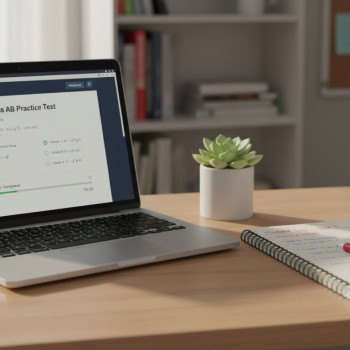Why Motivation Dips Are Normal — And Treatable
If you’ve ever watched your child enthusiastically start an AP review plan only to see that energy fizzle after a week or two, you’re in good company. Motivation isn’t a steady flame — it’s a weather pattern. There are bright, focused days and cloudy, distracted ones. Understanding that dips are normal takes the blame off your teen and puts the focus back on practical fixes.
Motivation lapses happen for predictable reasons: burnout, unclear goals, lack of immediate feedback, all-or-nothing thinking, and competing social or extracurricular priorities. The trick isn’t to eliminate dips altogether — that’s unrealistic — but to equip your child with reliable ways to move forward when the spark dims.
How Rewards Help (When They’re Done Right)
Rewards can do more than bribe a short study burst. When designed thoughtfully, they can:
- Turn small wins into visible progress
- Provide timely feedback that sustains effort
- Help form dependable habits through reinforcement
- Build intrinsic motivation over time by creating competence and autonomy
Important caveat: rewards should support learning goals rather than replace them. The best reward systems make study feel meaningful and manageable rather than a contest of wills between parent and child.
Short-Term vs. Long-Term Rewards
Think of rewards on two timelines:
- Short-term rewards (immediate or same-day): Quick, small stimuli to keep momentum — a coffee date after a study sprint, 30 minutes of gaming after a practice set.
- Long-term rewards (milestone or outcome-based): Bigger motivators aligned with major goals — a weekend trip after completing a full AP curriculum review or a celebration after a strong practice exam score.
Both are useful. Short-term rewards help on the daily grind; long-term rewards keep sight of the finish line.
Designing Rewards That Work for AP Students
Here are concrete principles you can follow to design effective rewards your teen won’t roll their eyes at.
1. Make Rewards Predictable and Immediate
Human brains prefer predictable outcomes. If a student knows that 45 focused minutes equals a 15-minute walk outside and that this pattern repeats, adherence improves. Immediate rewards strengthen the association between the desired behavior (studying) and the positive outcome.
2. Tie Rewards to Clear, Achievable Tasks
Instead of vague promises (“study harder”), link rewards to concrete tasks: finish two APUSH primary-source analyses, complete a full set of calculus practice problems, or score at least 70% on a practice FRQ. When objectives are specific, students can see progress clearly.
3. Offer Choices to Boost Autonomy
Autonomy matters to teens. Offer a selection of reward options rather than imposing one. Let them choose between a favorite snack, time with friends, or an episode of a show. Choice increases buy-in and develops decision-making muscles important for college-level independence.
4. Use Nonmaterial Rewards Too
Not every effective reward needs a purchase. Praise, privileges, a one-on-one mother-child lunch, or extra sleep on the weekend can be powerful. These intangible rewards often feel more meaningful and less transactional.
5. Keep Rewards Proportionate
The size of the reward should match the effort and importance of the task. A major milestone (finishing a semester’s review) deserves a bigger celebration than completing a single homework assignment.
6. Pair Rewards with Feedback and Reflection
Rewards without feedback don’t teach. After a reward is earned, take two minutes to reflect with your teen: What went well? What surprised them? What’s the next step? This cements learning and helps intrinsic motivation grow.
Practical Reward Ideas for AP Prep
Below are categorized, parent-tested reward ideas that align with the principles above. Mix and match to suit your teen’s personality and schedule.
Quick Wins (Daily or Same-Day)
- 15–30 minutes of screen time or social time after a focused study block
- A favorite snack or specialty coffee
- A short walk, mini-workout, or time with a pet
- Sticker or checkmark on a visible progress chart
Weekly Rewards
- Saturday morning sleep-in (extra 60–90 minutes)
- Family movie night where they pick the film
- Choice of dinner or cooking their favorite meal
- One extended gaming or hobby session
Milestone Rewards (Major Achievements)
- Weekend day trip to a nearby attraction
- Shopping gift card for study milestones (used sparingly)
- Ticket to a concert, sports event, or cultural outing after a strong practice exam
- Special one-on-one outing with a parent or mentor
Intrinsic-Focused Rewards
- Opportunities to mentor younger students (reinforces mastery)
- Recognition ceremony at home — share achievements and next goals
- Allowing leadership of a study group or class review session
Sample Reward Plan: A 6-Week Cycle
The following table shows a sample, balanced reward schedule you can adapt. It mixes immediate reinforcement with larger incentives to sustain motivation through a study cycle.
| Week | Daily Goal | Short-Term Reward | Weekly Milestone | Weekly Reward |
|---|---|---|---|---|
| 1 | 45 min focused study + 1 practice set | 15 min screen break | Complete 5 practice sets | Family game night |
| 2 | Review notes + 30 min guided practice | Favorite snack | Score 65%+ on weekly quiz | Choose weekend brunch |
| 3 | Timed practice section | Short walk or coffee shop break | Complete timed practice | Extra sleep-in |
| 4 | Review weakest topics | Podcast or music time | Show tangible improvement on topic | Small shopping treat |
| 5 | Full-length practice exam | Relaxing activity | Reach target practice score | Day trip |
| 6 | Targeted review + reflection | Movie or hobby time | Complete review cycle | Major celebration |
Handling Resistance: When Rewards Don’t Seem to Work
Sometimes rewards fall flat. If your teen shrugs and says, “I don’t care,” try these steps:
1. Check the Goal Fit
Is the task meaningful to them? If not, scale tasks down until they’re manageable and meaningful. A teen overwhelmed by a 90-minute study block may prefer two 30-minute sessions instead.
2. Reassess Timing
Immediate rewards tend to be more effective than distant promises. If the reward is too far in the future, it may not motivate today’s work.
3. Experiment with Different Reward Types
Some students respond to material treats; others to privileges or autonomy. Offer a menu of options and rotate them to see what sticks.
4. Remove Shame and Add Agency
Motivation often drops when students fear judgment. Replace criticism with curiosity: ask what went wrong and what small shift could make the next session better.
Using Data and Feedback to Tune Rewards
Objective progress data (like quiz scores, completed practice tests, and timed sections) makes rewards fair and instructive. When progress is visible, students feel competent — and competence fuels intrinsic motivation.
Keep a simple tracking sheet: the task, the result, and the reward earned. This can be a shared Google Sheet, a printable chart on the fridge, or an app that your teen prefers. The formality of tracking helps convert fuzzy effort into clear wins.
How Parents Can Stay Supportive Without Micromanaging
Finding the balance between support and pressure is an art. Here’s a short ritual that works for many families:
- Set a weekly 10–15 minute check-in on Sunday evening.
- Ask three simple questions: What’s one win from last week? What’s one obstacle? What’s one small goal for this week?
- Offer to help set a concrete reward plan for the coming week, but let the student choose the reward.
These short check-ins reduce surprises on test days and help your teen practice reflecting — a skill that pays dividends during AP exams and college life.
Case Examples: What Worked for Real Families
Here are two anonymized mini-cases showing how different reward systems fit different personalities.
Case A: The Planner Who Needed Micro-Motivation
Maya is methodical but burned out by long study sessions. Her parents introduced a ‘‘45/15’’ rule: 45 minutes of focused work followed by 15 minutes of chosen downtime. They paired each completed study block with a sticker on a visible chart. After two weeks, the stickers created momentum — Maya liked the visible streak and rarely missed study blocks. Her weekly reward was to pick a new recipe for family dinner, which boosted her sense of contribution.
Case B: The Social Learner
Jordan thrives on social connection. Turning practice into social events helped: a weekly study party with two classmates, followed by a walk or pizza. The reward was social time, which reinforced his study routine without feeling like a chore. Objective progress — improved quiz scores — was celebrated with a midterm movie night chosen by Jordan.
When to Consider Professional Help
If motivation dips become chronic despite thoughtful reward systems, consider external support. A skilled tutor or coach can reframe goals, provide expert feedback, and create tailored study plans that reignite motivation. For example, Sparkl’s personalized tutoring offers 1-on-1 guidance, tailored study plans, expert tutors, and AI-driven insights — a combination that often helps students break through plateaus and restore steady progress.
Professional support is not a sign of failure; it’s a strategic move. A tutor can translate a generic study plan into specific, bite-sized actions and provide the immediate feedback loop that rewards systems need to work.
Practical Tools and Routines to Pair with Rewards
Tools can make rewards easier to implement and sustain. Consider:
- Timers (Pomodoro or simple kitchen timers) to enforce study and break cycles.
- Visual trackers (sticker charts or apps) to display progress.
- Short reflection prompts that encourage your teen to note one thing they learned each study session.
- Practice exams scheduled into the calendar so rewards align with measurable outcomes.
Checklist: A Simple Parent-Teen Reward Setup
Use this quick checklist to create a workable reward plan tonight:
- Pick one AP subject to focus on for two weeks.
- Define daily, weekly, and milestone tasks (be specific).
- Agree on short-term and long-term rewards — give the student choices.
- Set up a visible tracking method.
- Schedule a weekly 10–15 minute check-in.
- Decide when to reassess and when to get extra help if progress stalls.
Common Pitfalls to Avoid
Parents sometimes unintentionally undermine reward systems. Avoid these traps:
- Over-rewarding: If rewards are too frequent or too large, study becomes purely transactional.
- Inconsistency: Promising a reward and then not following through harms trust.
- Public shaming: Criticism or punishment for missed goals kills motivation faster than it helps.
- Micromanagement: Too much hovering reduces your teen’s sense of agency.
Bringing It All Together: A Parent’s One-Week Starter Plan
Here’s a short, practical plan you can try this week. It’s intentionally small so it’s easy to start and scale.
- Sunday evening: 10-minute planning chat. Choose one AP subject and set three specific tasks for the week.
- Daily: Two study blocks of 45 minutes each. Short-term reward = 20 minutes of chosen downtime after each block.
- Wednesday: Midweek check — celebrate one win, tweak if needed.
- Friday: Weekly milestone (complete a practice set). Weekly reward = family-chosen dinner or a late start Saturday.
- End of week: Quick reflection — what worked? What felt hard? Adjust rewards accordingly.

Final Thought: Small Wins, Big Momentum
AP prep is a marathon of many short sprints. Rewards — when predictable, proportionate, and paired with clear goals and feedback — convert those sprints into sustainable progress. As a parent, your role is to create a structure where your teen can succeed repeatedly: set clear tasks, offer meaningful rewards, and step back enough to let them build autonomy.
If motivation stalls despite these efforts, consider bringing in targeted help. Sparkl’s personalized tutoring, with tailored study plans, expert tutors, and AI-driven insights, can be an excellent complement to family support — especially for students who need precise feedback and one-on-one accountability.
Above all, remember this: your teen’s motivation will ebb and flow. What matters most is the steady, compassionate rhythm you build together — one small win at a time.

















No Comments
Leave a comment Cancel